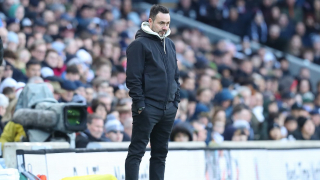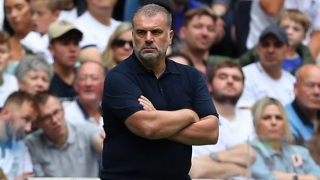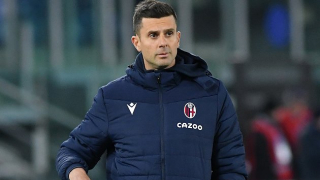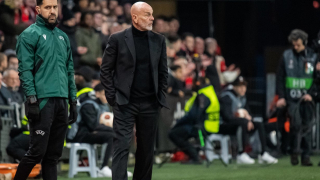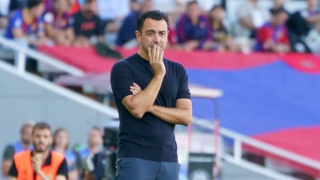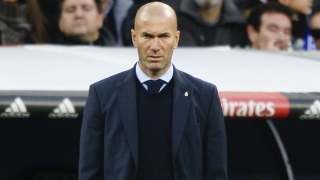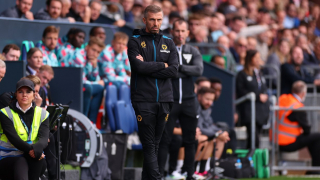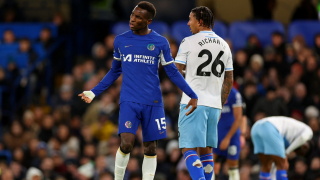England reached the 2018 World Cup without really breaking sweat, beating Slovakia, Slovenia and neighbours Scotland to automatic qualification without losing a single game. However, while their results were impressive, their performances received mixed reviews.
Manager Gareth Southgate has since revolutionised his setup, introducing a number of youngsters and shifting from 4-2-3-1 to 3-5-1-1. The change reflects an increasingly open-minded tactical approach on show in the English Premier League, where the back three has become widely accepted in the last two years thanks mainly to its usage by Antonio Conte and his 2017 title-winning Chelsea side.
PROBABLE LINE-UP
(3-5-1-1): Pickford; Walker, Stones, Maguire; Trippier, Lingard, Dier, Alli, Young; Sterling; Kane
Southgate's emphasis on improving England's possession game is perhaps the main motivation for deploying a back three featuring converted full-back Kyle Walker and ball-playing centre-backs in John Stones and Harry Maguire. Behind them Jordan Pickford, who is set to take over from Joe Hart as No.1, offers better distribution than his predecessor, supporting build-up or instigating quick counter-attacks with accurate long kicks.
With Alex Oxlade-Chamberlain out injured, there was uncertainty over who would start in the right-sided central midfield berth. However, Jesse Lingard's appearance in this role for the recent friendly with Nigeria suggests he could play in the same midfield as the similarly forward-thinking Dele Alli. They will both be expected to combine with a front two of Raheem Sterling and Harry Kane that offers pace and precision.
DEFINED BY DYNAMISM
England enjoyed a lot of the ball at Euro 2016, but they didn't use it particularly efficiently. This was one of the primary reasons they lost to Iceland in the second round despite having 68 per cent of possession. Southgate has prioritised this aspect of the national team's game since taking charge two years ago, and there have been some clear improvements.
In the attacking phase England take up a 3-3-3-1 shape, with the defensive midfielder – usually Eric Dier – operating in front of the back three, adjusting his position to combine with the defenders. At times these four players form a rhombus build-up structure, something that is difficult for opposition sides to press due to the fact each player within the structure has at least two nearby passing options at different angles.
The above comes in handy if Southgate's side are pressed high. If they are not and the opposition sit back, one of the back three is often tasked with attacking the opposition defensive block. This is viable not only thanks to the security provided by the extra centre-back, but because Walker, Stones and Maguire are all comfortable dribbling into midfield.
Stones is particularly astute during build-up play, having developed a keen positional sense while playing for Pep Guardiola at club level. Below is an example of what he offers when under pressure. Walker is being pressed and Stones is in another Italy player's cover shadow, so he moves forward on the blind side of his opposite man to offer Walker a forward pass, eliminating two opponents in the process.
If and when England can out-play their opposition's first line of pressure, they then aim to progress possession from the middle to the attacking third. This is where they have often struggled in the past, particularly against deep defensive blocks, but their new system offers them greater penetrative potential.
The outer central midfielders take up positions in the inside channels behind the opposition's midfield line. They are joined on the same line by Sterling, as seen in the below graphic. This trio often rotate positions and make opposite movements in order to find space. These movements involve one player coming deep while one or both of the others advance. The combination of three players moving in different directions forces the opposition midfielders into defensive decisions that are difficult to make at such high speed.
Both wing-backs play an important role in freeing up space for Alli, Sterling and Lingard to exploit. This was seen against Nigeria, where Ashley Young received the ball in an advanced position on the left, enticing the Nigerian right-back out to meet him. This created space between the Nigerian right-back and right-sided centre-back, which Sterling and Alli could move into.
Up front, Kane is comfortable dropping back, meaning what was thought of as a dynamic attacking midfield three is really more of a dynamic front four. As a result, Southgate's England aren't just tougher to press high – they're also tougher to defend deep.
PRESSING ISSUES
England are more controlled in the way they defend under Southgate. A 5-3-2 structure is formed with both wing-backs dropping into the defensive line, while the two frontmen focus on maintaining compactness between themselves and the three midfielders. The overall approach is positional, though there is man-marking in the back line and some man-oriented pressing in midfield.
The combination of the two strikers' dropping deeper and the man-marking in the defensive line helps England to form a compact medium block with little space between the lines. However, there are genuine question marks over how easy it is manipulate the midfield three.
Both outer central midfielders are tasked with moving out wide to press their full-back whenever the opposition have possession on their side. Dier will then support this pressing, often covering a nearby opponent. But there have been several occasions in recent friendlies where the defensive midfielder has been caught too high up the field, leaving gaps between England's midfield and defensive lines.
An example of this is seen in the below screenshot, taken from the draw with Italy. England's front two are played through and Dier responds by pushing up to press the Italy ball-player. He is bypassed by a simple one-two, which forces both outer central midfielders to converge to cover behind him. This leaves space out wide, where Italy work a 2v1 situation to get a cross in.
While on this occasion England's defensive issues didn't lead to a goal conceded, it did lead to a dangerous attack being built in their half. Generally this has been covered up by the aforementioned compactness of the team's defensive structure, but there will be teams at the World Cup keen on exploiting it.
Perhaps England's most important game this summer is their opener against Tunisia. If they can win that, they should seal a place in the knockout rounds. From there, no team from Group H – Poland, Colombia, Senegal or Japan – should intimidate them. Young, fast, dynamic and increasingly organised, Southgate's side can realistically aim for a quarter-final spot.

